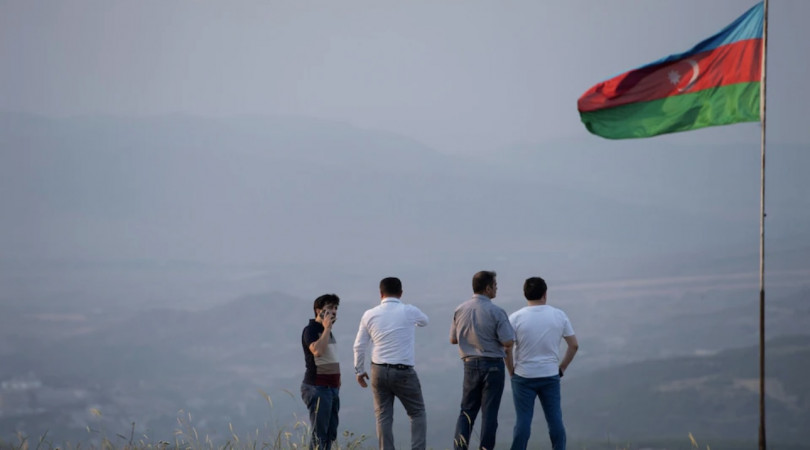An international tribunal will consider evidence of widespread environmental destruction during the conflict between the two nations, including deforestation and pollution, and will be asked to order Armenia to pay reparations.
It is the first time any country has sought inter-state arbitration under the Bern convention. If Azerbaijan wins, it will set a precedent for putting an economic value on biodiversity and environmental destruction.
War erupted between Armenia and Azerbaijan in the early 1990s, when the Nagorno-Karabakh enclave moved to declare independence as the Soviet Union collapsed. Armenian forces won the war and governed the territory for nearly three decades until most of it was captured in a major Azeri offensive in September 2020.
Azerbaijan says that when the territories were retaken it found habitats and species had been harmed, natural resources depleted, and biodiversity destroyed.
The lawsuit is part of a wider diplomatic conflict between the two states. Azerbaijan occupies a key strategic point between Europe and Asia in geopolitical terms, but is also a biological crossroads for plant and animal species.
According to Azerbaijan’s ecology and natural resources ministry, mining during the occupation damaged much of the forests, which are a biodiversity hotspot, home to rare, endangered and endemic species including the Caucasian leopard, brown bear, grey wolf, as well a the greater spotted and steppe eagles.
The ministry said more than 7,000 hectares (17,000 acres) of protected forests were damaged. Some of these reserves were established to protect rare and fragile ecosystems, such as an oriental plane forest in the Basitchay River valley.
Ancient trees in the war zone, some 2,000 years old, were reportedly cut down. As well as having an important role in regulating microclimates and conserving biodiversity, these trees are culturally important.
A UN Environment Programme report written last year for Azerbaijan found serious damage to valuable farmland and water-management systems. It outlined evidence that coal mining at Chardaghli and quarrying took place without proper environmental controls, raising the risk of chemical pollution and cave-ins.
Landmines remain a problem and have killed livestock and wildlife, as well as sparking fires. Heavy metals and residues from explosives contaminate soil and water.
But UNEP also found that road-building begun in January 2021 as part of Azerbaijan’s reconstruction programme also reduced forest cover. And the report said biodiversity may have actually benefited during the war, re-establishing itself around abandoned settlements.

Azerbaijan claims Armenia violated its obligations under the Bern convention to maintain all wild flora and fauna, to ensure habitats are conserved and restored, and to protect specific species, including migratory ones.
“Instead of preserving biodiversity and the environment during its illegal occupation, Armenia destroyed them,” said Elnur Mammadov, a deputy foreign minister and Azerbaijan’s representative in the arbitration.
He said Azerbaijan had tried for more than 18 months to resolve the dispute diplomatically. “Regrettably, Armenia has stonewalled and ultimately ignored Azerbaijan’s efforts. We have therefore been left with no choice but to bring these proceedings to hold Armenia to account for its irresponsible damage to the environment.”
The legal challenge, part of a wider trend in biodiversity litigation, is the first known case to test the Bern convention. Zaneta Sedilekova, a lawyer at the London-based firm Clyde & Co, said it provided a unique example of a challenge to vast biodiversity destruction by an occupying state that affects healthy ecosystem services to people.
“Although premised on the fact of illegal occupation, and thus difficult to translate into a different context, it points towards an increasing appreciation by states of the irreplaceable value of biodiversity-rich, balanced and healthy ecosystems,” she said.
Concern about environmental destruction in wartime and understanding of its complex effects is growing. In December, the UN general assembly agreed 27 legal principles for protecting the environment during armed conflict and occupation, including on corporate conduct and the use of natural resources.
Both countries now have three months to appoint arbitrators who will consider evidence of any damage and decide whether and how much Armenia must pay in reparations. As a signatory to the Bern convention, Armenia is legally bound to respect the ruling.
“If Azerbaijan succeeds in its case, this will be the first time that an arbitral tribunal allocates damages for environmental destruction and, very likely, assesses the economic value of biodiversity loss and decline in ecosystem services on a particular area, and to a particular nation,” said Sedilekova.
“Such a precedent could have a profound impact on how state and non-state actors perceive the cost of biodiversity loss and, possibly, accelerate protection, conservation and restoration of biodiversity.”
As well as seeking compensation, Azerbaijan wants the tribunal to order Armenia to stop ongoing activities that it says continue to damage the enivronment. Analysis of the Okhchuchay River by Azerbaijan in 2021 showed extremely high concentrations of heavy metals, including cadmium, lead, nickel, iron, molybdenum and zinc in water and sediment. Azerbaijan says several protected fish and amphibian species are threatened and claims the problem is caused by wastewater from copper and molybdenum mines upstream in Armenia, as well as domestic effluent.
The UNEP report noted that contamination of the Okhchuchay had long been a concern in Armenia. It said Armenian environmental and civil society organisations had regularly “expressed alarm over the river’s contamination with heavy metals and other pollutants, and research by Armenian scientists has revealed worsening conditions”.
Azerbaijan sues Armenia for wartime environmental damage | Azerbaijan | The Guardian

.jpg)

















